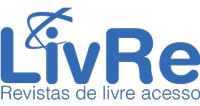NEURODEGENERATION PROCESSES GO FAR BEYOND NECROSIS AND APOPTOSIS!
Visualizações: 573DOI:
https://doi.org/10.54038/ms.v1i1.2Palavras-chave:
neurodegeneration, cell death, apoptosis, necrosisResumo
Neural plasticity is a consequence of a delicate balance between the processes of neurodegeneration and neurogenesis. When neurodegeneration overcomes neurogenesis, neurodegenerative diseases occur, which affect cognitive functions such as memory, language, and executive functions. Neurodegeneration, the process of neuronal cell death, presents several aspects that were categorized according to their macroscopic and/or morphological characteristics. The concept of apoptosis, autophagy, and necrosis is still widely used today. On the other hand, more in-depth forms emerge in the clinical and academia, describing the cascade of cell death events through biochemical approaches, and the essential (causal) and accessory (correlative) aspects of the cell death process. New concepts were introduced, addressed in the modules of signal translation involving issues such as the initiation, execution, and propagation of cell death, as well as the pathophysiological relevance of each of the main types. Currently, twelve types of cell death are already defined, not only apoptosis, necrosis, and autophagy. In this review, we will address the main mechanisms of cell death, with special emphasis on the participation of caspases and other proteins in these mechanisms. We will discuss some types of cell death such as extrinsic and intrinsic apoptosis, necrosis, necroptosis, and autophagy-dependent cell death. We hope to elucidate key points in molecular systems, including the receptors involved in cell death and their role in neurodegeneration, and showing that neurodegeneration has characteristics beyond morphological (apoptosis and necrosis).
Referências
Alavian, K. N., Li, H., Collis, L., Bonanni, L., Zeng, L., Sacchetti, S., … Jonas, E. A. (2012). Bcl-xL regulates metabolic efficiency of neurons through interaction with the mitochondrial F1 FO ATP synthase. Physiology & Behavior, 176(3), 139–148. https://doi.org/10.1016/j.physbeh.2017.03.040 DOI: https://doi.org/10.1016/j.physbeh.2017.03.040
Ashkenazi, A., & Salvesen, G. (2014). Regulated Cell Death : Signaling and Mechanisms. The Annual Reveiw of Cell and Developmental Biology, 337–56. https://doi.org/10.1146/annurev-cellbio-100913-013226 DOI: https://doi.org/10.1146/annurev-cellbio-100913-013226
Bajwa, E., Pointer, C. B., & Klegeris, A. (2019). The role of mitochondrial damage-associated molecular patterns in chronic neuroinflammation. Mediators of Inflammation, 2019. https://doi.org/10.1155/2019/4050796 DOI: https://doi.org/10.1155/2019/4050796
Bathori., G., Csordas, G., Garcia-Perez, C., Davies, E., & Hajnoczky, G. (2006). Ca2+-dependent control of the permeability properties of the mitochondrial outer membrane and voltage-dependent anion-selective channel (VDAC). Journal of Biological Chemistry, 281(25), 17347–17358. https://doi.org/10.1074/jbc.M600906200 DOI: https://doi.org/10.1074/jbc.M600906200
Berghe, T. Vanden, Vanlangenakker, N., Parthoens, E., Deckers, W., Devos, M., Festjens, N., … Vandenabeele, P. (2010). Necroptosis, necrosis and secondary necrosis converge on similar cellular disintegration features. Cell Death and Differentiation, 17(6), 922–930. https://doi.org/10.1038/cdd.2009.184 DOI: https://doi.org/10.1038/cdd.2009.184
Cavalcante, G. C., Schaan, A. P., Cabral, G. F., Santana-Da-Silva, M. N., Pinto, P., Vidal, A. F., & Ribeiro-Dos-Santos, Â. (2019). A cell’s fate: An overview of the molecular biology and genetics of apoptosis. International Journal of Molecular Sciences, 20(17), 1–20. https://doi.org/10.3390/ijms20174133 DOI: https://doi.org/10.3390/ijms20174133
Chang, D. W., Xing, Z., Pan, Y., Algeciras-Schimnich, A., Barnhart, B. C., Yaish-Ohad, S., … Yang, X. (2002). C-FLIPL is a dual function regulator for caspase-8 activation and CD95-mediated apoptosis. EMBO Journal, 21(14), 3704–3714. https://doi.org/10.1093/emboj/cdf356 DOI: https://doi.org/10.1093/emboj/cdf356
Chaudhry, S. R., Hafez, A., Jahromi, B. R., Kinfe, T. M., Lamprecht, A., Niemelä, M., & Muhammad, S. (2018). Role of damage associated molecular pattern molecules (DAMPs) in aneurysmal subarachnoid hemorrhage (aSAH). International Journal of Molecular Sciences, 19(7). https://doi.org/10.3390/ijms19072035 DOI: https://doi.org/10.3390/ijms19072035
Czabotar, P. E., Lessene, G., Strasser, A., & Adams, J. M. (2014). Control of apoptosis by the BCL-2 protein family: implications for physiology and therapy. Nature Reviews Molecular Cell Biology, 15(1), 49–63. https://doi.org/10.1038/nrm3722 DOI: https://doi.org/10.1038/nrm3722
Degterev, A., Huang, Z., Boyce, M., Li, Y., Jagtap, P., Mizushima, N., … Yuan, J. (2005). Chemical inhibitor of nonapoptotic cell death with therapeutic potential for ischemic brain injury. Nature Chemical Biology, 1(2), 112–119. https://doi.org/10.1038/nchembio711 DOI: https://doi.org/10.1038/nchembio711
Dewson, G., & Kluck, R. M. (2009). Mechanisms by which Bak and Bax permeabilise mitochondria during apoptosis. Journal of Cell Science, 16, 2801–2807. https://doi.org/10.1242/jcs.038166 DOI: https://doi.org/10.1242/jcs.038166
Ferraro, E., Fuoco, C., Strappazzon, F., & Cecconi, F. (2010). Apoptosome Structure and Regulation. In F. Cecconi & M. D’Amelio (Eds.), Apoptosome: An up-and-coming therapeutical tool (pp. 27–39). Dordrecht: Springer Netherlands. https://doi.org/10.1007/978-90-481-3415-1_2 DOI: https://doi.org/10.1007/978-90-481-3415-1_2
Frezza, C., Cipolat, S., Martins de Brito, O., Micaroni, M., Beznoussenko, G. V., Rudka, T., … Scorrano, L. (2006). OPA1 Controls Apoptotic Cristae Remodeling Independently from Mitochondrial Fusion. Cell, 126(1), 177–189. https://doi.org/10.1016/j.cell.2006.06.025 DOI: https://doi.org/10.1016/j.cell.2006.06.025
Fuchslocher Chico, J., Saggau, C., & Adam, D. (2017). Proteolytic control of regulated necrosis. Biochimica et Biophysica Acta - Molecular Cell Research, 1864(11), 2147–2161. https://doi.org/10.1016/j.bbamcr.2017.05.025 DOI: https://doi.org/10.1016/j.bbamcr.2017.05.025
Galluzzi, L., Vitale, I., Aaronson, S. A., Abrams, J. M., Adam, D., Agostinis, P., … Kroemer, G. (2018). Molecular mechanisms of cell death: recommendations of the Nomenclature Committee on Cell Death 2018. Cell Death & Differentiation. https://doi.org/10.1038/s41418-017-0012-4 DOI: https://doi.org/10.1038/s41418-017-0012-4
Galluzzi, L., Vitale, I., Abrams, J. M., Alnemri, E. S., Baehrecke, E. H., Blagosklonny, M. V., … Kroemer, G. (2012). Molecular definitions of cell death subroutines: Recommendations of the Nomenclature Committee on Cell Death 2012. Cell Death and Differentiation, 19(1), 107–120. https://doi.org/10.1038/cdd.2011.96 DOI: https://doi.org/10.1038/cdd.2011.96
Gilot, D., Serandour, A. L., Ilyin, G. P., Lagadic-Gossmann, D., Loyer, P., Corlu, A., … Guguen-Guillouzo, C. (2005). A role for caspase-8 and c-FLIPL in proliferation and cell-cycle progression of primary hepatocytes. Carcinogenesis, 26(12), 2086–2094. https://doi.org/10.1093/carcin/bgi187 DOI: https://doi.org/10.1093/carcin/bgi187
Goldschneider, D., & Mehlen, P. (2010). Dependence receptors: A new paradigm in cell signaling and cancer therapy. Oncogene, 29(13), 1865–1882. https://doi.org/10.1038/onc.2010.13 DOI: https://doi.org/10.1038/onc.2010.13
Green, D. R., Oguin, T. H., & Martinez, J. (2016). The clearance of dying cells: Table for two. Cell Death and Differentiation, 23(6), 915–926. https://doi.org/10.1038/cdd.2015.172 DOI: https://doi.org/10.1038/cdd.2015.172
Grivicich, I., Regner, A., & da Rocha, A. B. (2007). Morte Celular por Apoptose. Revista Brasileira de Cancrologia, 53(3), 335–343. https://doi.org/10.1590/S0102-311X2003000200031 DOI: https://doi.org/10.32635/2176-9745.RBC.2007v53n3.1801
Hara, T., Nakamura, K., Matsui, M., Yamamoto, A., Nakahara, Y., Suzuki-Migishima, R., … Mizushima, N. (2006). Suppression of basal autophagy in neural cells causes neurodegenerative disease in mice. Nature, 441(7095), 885–889. https://doi.org/10.1038/nature04724 DOI: https://doi.org/10.1038/nature04724
Kesidou, E., Lagoudaki, R., Touloumi, O., Poulatsidou, K. N., & Simeonidou, C. (2013). Autophagy and neurodegenerative disorders. Neural Regeneration Research, 8(24), 2275–2283. https://doi.org/10.3969/j.issn.1673-5374.2013.24.007
Komatsu, M., Waguri, S., Chiba, T., Murata, S., Iwata, J., Tanida, I., … Tanaka, K. (2006). Loss of autophagy in the central nervous system causes neurodegeneration in mice. Nature, 441(7095), 880–884. https://doi.org/10.1038/nature04723 DOI: https://doi.org/10.1038/nature04723
Kristiansen, M., & Ham, J. (2014). Programmed cell death during neuronal development: the sympathetic neuron model. Cell Death and Differentiation, 21(7), 1025–35. https://doi.org/10.1038/cdd.2014.47 DOI: https://doi.org/10.1038/cdd.2014.47
Kuida, K. (2000). Caspase-9, 32, 121–124. DOI: https://doi.org/10.1016/S1357-2725(99)00024-2
La Rovere, R. M. L., Roest, G., Bultynck, G., & Parys, J. B. (2016). Intracelular Ca2+ signaling and Ca2+ microdomains in the control of cell survival, apopotosis and autophagy. https://doi.org/10.1016/j.electacta.2008.09.002 DOI: https://doi.org/10.1016/j.ceca.2016.04.005
Li, P., Nijhawan, D., Budihardjo, I., Srinivasula, S. M., Ahmad, M., Alnemri, E. S., & Wang, X. (1997). Cytochrome c and dATP-dependent formation of Apaf-1/caspase-9 complex initiates an apoptotic protease cascade. Cell, 91(4), 479–489. https://doi.org/10.1016/S0092-8674(00)80434-1 DOI: https://doi.org/10.1016/S0092-8674(00)80434-1
Li, P., Zhou, L., Zhao, T., Liu, X., & Zhang, P. (2017). Caspase-9 : structure , mechanisms and clinical application, 8(14), 23996–24008. DOI: https://doi.org/10.18632/oncotarget.15098
Linkermann, A., & Green, D. R. (2014). Necroptosis. New England Journal of Medicine, 370(5), 455–465. https://doi.org/10.1056/NEJMra1310050 DOI: https://doi.org/10.1056/NEJMra1310050
Liu, D., Ke, Z., & Luo, J. (2017). Thiamine Deficiency and Neurodegeneration: the Interplay Among Oxidative Stress, Endoplasmic Reticulum Stress, and Autophagy. Molecular Neurobiology, 54(7), 5440–5448. https://doi.org/10.1007/s12035-016-0079-9 DOI: https://doi.org/10.1007/s12035-016-0079-9
Lourenço, F., Galvan, V., Fombonne, J., Corset, V., Liambi, F., Muller, U., … Mehlen, P. (2009). Netrin-1 interacts with amyloid precursor protein and regulates amyloid-β production. Cell Death Differ, 16(1), 665–663. https://doi.org/10.1161/CIRCULATIONAHA.110.956839 DOI: https://doi.org/10.1038/cdd.2008.191
Mariño, G., Madeo, F., & Kroemer, G. (2011). Autophagy for tissue homeostasis and neuroprotection. Current Opinion in Cell Biology, 23(2), 198–206. https://doi.org/https://doi.org/10.1016/j.ceb.2010.10.001 DOI: https://doi.org/10.1016/j.ceb.2010.10.001
Mcarthur, K., & Kile, B. T. (2018). Apoptotic Caspases : Multiple or Mistaken Identities ? Trends in Cell Biology, 28(6), 475–493. https://doi.org/10.1016/j.tcb.2018.02.003 DOI: https://doi.org/10.1016/j.tcb.2018.02.003
Mizushima, N., Ohsumi, Y., & Yoshimori, T. (2002). Autophagosome formation in mammalian cells. Cell Structure and Function, 27(6), 421–429. https://doi.org/10.1247/csf.27.421 DOI: https://doi.org/10.1247/csf.27.421
Monaco, G., Decrock, E., Arbel, N., Van Vliet, A. R., La Rovere, R. M., De Smedt, H., … Bultynck, G. (2015). The BH4 domain of anti-apoptotic Bcl-XL, but not that of the related Bcl-2, limits the voltage-dependent anion channel 1 (VDAC1)-mediated transfer of pro-apoptotic Ca2+ signals to mitochondria. Journal of Biological Chemistry, 290(14), 9150–9161. https://doi.org/10.1074/jbc.M114.622514 DOI: https://doi.org/10.1074/jbc.M114.622514
Nagata, S., & Tanaka, M. (2017). Programmed cell death and the immune system. Nature Rev Immunol, 17(5), 333–340. https://doi.org/10.1038/nri.2016.153 DOI: https://doi.org/10.1038/nri.2016.153
Newton, K., Wickliffe, K. E., Dugger, D. L., Maltzman, A., Roose-Girma, M., Dohse, M., … Dixit, V. M. (2019). Cleavage of RIPK1 by caspase-8 is crucial for limiting apoptosis and necroptosis. Nature, 574(7778), 428–431. https://doi.org/10.1038/s41586-019-1548-x DOI: https://doi.org/10.1038/s41586-019-1548-x
Nijhawan, D., Honarpour, N., & Wang, X. (2000). Apoptosis in neural development and disease. Annu Rev Neurosci, 23(May 2006), 73–87. https://doi.org/10.1146/annurev.neuro.23.1.73 DOI: https://doi.org/10.1146/annurev.neuro.23.1.73
Oberst, A. (2016). Death in the fast lane: what’s next for necroptosis? FEBS Journal, 283, 2616–2625. https://doi.org/10.1111/febs.13520 DOI: https://doi.org/10.1111/febs.13520
Pathway, A. N. A.--independent I., Rao, R. V, Castro-obregon, S., Frankowski, H., Schuler, M., Stoka, V., … Ellerby, H. M. (2002). Coupling Endoplasmic Reticulum Stress to the Cell Death Program. The Journal of Biological Chemistry, 277(24), 21836–21842. https://doi.org/10.1074/jbc.M202726200 DOI: https://doi.org/10.1074/jbc.M202726200
Riedl, S. J., & Salvesen, G. S. (2007). The apoptosome : signalling platform of cell death. Nature Rev Immunol, 8(May), 405–413. https://doi.org/10.1038/nrm2153 DOI: https://doi.org/10.1038/nrm2153
Rong, Y., & Distelhorst, C. W. (2008). Bcl-2 Protein Family Members: Versatile Regulators of Calcium Signaling in Cell Survival and Apoptosis. Annual Review of Physiology, 70(1), 73–91. https://doi.org/10.1146/annurev.physiol.70.021507.105852 DOI: https://doi.org/10.1146/annurev.physiol.70.021507.105852
Rubinsztein, D. C. (2006). The roles of intracellular protein-degradation pathways in neurodegeneration. Nature, 443(7113), 780–786. https://doi.org/10.1038/nature05291 DOI: https://doi.org/10.1038/nature05291
Rubinsztein, D. C., DiFiglia, M., Heintz, N., Nixon, R. A., Qin, Z. H., Ravikumar, B., … Tolkovsky, A. (2005). Autophagy and its possible roles in nervous system diseases, damage and repair. Autophagy, 1(1), 11–22. https://doi.org/10.4161/auto.1.1.1513 DOI: https://doi.org/10.4161/auto.1.1.1513
Saikumar, P., Dong, Z., Mikhailov, V., Denton, M., Weinberg, J. M., & Venkatachalam, M. A. (1999). Apoptosis: definition, mechanisms, and relevance to disease. The American Journal of Medicine, 107(5), 489–506. https://doi.org/10.1016/S0002-9343(99)00259-4 DOI: https://doi.org/10.1016/S0002-9343(99)00259-4
Shamas-din, A., Brahmbhatt, H., Leber, B., & Andrews, D. W. (2011). BH3-only proteins : Orchestrators of apoptosis. BBA - Molecular Cell Research, 1813(4), 508–520. https://doi.org/10.1016/j.bbamcr.2010.11.024 DOI: https://doi.org/10.1016/j.bbamcr.2010.11.024
Shi, R., Fu, Y., Zhao, D., Boczek, T., Wang, W., & Guo, F. (2021). Cell death modulation by transient receptor potential melastatin channels TRPM2 and TRPM7 and their underlying molecular mechanisms. Biochemical Pharmacology, 190, 114664. https://doi.org/10.1016/j.bcp.2021.114664 DOI: https://doi.org/10.1016/j.bcp.2021.114664
Shoshan-Barmatz, V., De Pinto, V., Zweckstetter, M., Raviv, Z., Keinan, N., & Arbel, N. (2010). VDAC, a multi-functional mitochondrial protein regulating cell life and death. Molecular Aspects of Medicine, 31(3), 227–285. https://doi.org/10.1016/j.mam.2010.03.002 DOI: https://doi.org/10.1016/j.mam.2010.03.002
Shoshan-Barmatz, V., Zakar, M., Rosenthal, K., & Abu-Hamad, S. (2009). Key regions of VDAC1 functioning in apoptosis induction and regulation by hexokinase. Biochimica et Biophysica Acta - Bioenergetics, 1787(5), 421–430. https://doi.org/10.1016/j.bbabio.2008.11.009 DOI: https://doi.org/10.1016/j.bbabio.2008.11.009
Solá, S., Pedro, T., Ferreira, H., & Rodrigues, C. M. P. (2001). Conceitos gerais Necrose ou apoptose : quando e porquê ?
Strasser, A., Jost, P. J., & Nagata, S. (2009). Review The Many Roles of FAS Receptor Signaling in the Immune System. Immunity, 30(2), 180–192. https://doi.org/10.1016/j.immuni.2009.01.001 DOI: https://doi.org/10.1016/j.immuni.2009.01.001
Tait, S. W. G., & Green, D. R. (2010). Mitochondria and cell death: outer membrane permeabilization and beyond. Nature Reviews Molecular Cell Biology, 11(9), 621–632. https://doi.org/10.1038/nrm2952 DOI: https://doi.org/10.1038/nrm2952
Tan, W., & Colombini, M. (2007). VDAC closure increases calcium ion flux. Biochimica et Biophysica Acta - Biomembranes, 1768(10), 2510–2515. https://doi.org/10.1016/j.bbamem.2007.06.002 DOI: https://doi.org/10.1016/j.bbamem.2007.06.002
Tooze, S. A., & Yoshimori, T. (2010). The origin of the autophagosomal membrane. Nature Cell Biology, 12(9), 831–835. https://doi.org/10.1038/ncb0910-831 DOI: https://doi.org/10.1038/ncb0910-831
Turrigiano, G. G., & Nelson, S. B. (2000). Hebb and homeostasis in neuronal plasticity. Current Opinion in Neurobiology, 10(3), 358–364. https://doi.org/10.1016/S0959-4388(00)00091-X DOI: https://doi.org/10.1016/S0959-4388(00)00091-X
van Praag, H., Kempermann, G., & Gage, F. H. (1999). Running increases cell proliferation and neurogenesis in the adult mouse dentate gyrus. Nat Neurosci, 2(3), 266–270. https://doi.org/10.1038/6368 DOI: https://doi.org/10.1038/6368
Velaithan, R., Kang, J., Hirpara, J. L., Loh, T., Goh, B. C., Le Bras, M., … Pervaiz, S. (2011). The small GTPase Rac1 is a novel binding partner of Bcl-2 and stabilizes its antiapoptotic activity. Blood, 117(23), 6214–6226. https://doi.org/10.1182/blood-2010-08-301283 DOI: https://doi.org/10.1182/blood-2010-08-301283
Villunger, A., Michalak, E. M., Coultas, L., Müllauer, F., Böck, G., Ausserlechner, M. J., … Strasser, A. (2003). p53- and Drug-Induced Apoptotic Responses Mediated by BH3-Only Proteins Puma and Noxa. Science, 302(5647), 1036–1038. https://doi.org/10.1126/science.1090072 DOI: https://doi.org/10.1126/science.1090072
Wallach, D., Kang, T., & Kovalenko, A. (2014). Concepts of tissue injury and cell death in inflammation: a historical perspective. NATURE REVIEWS | IMMUNOLOGY. DOI: https://doi.org/10.1038/nri3606
Wang, L., Du, F., & Wang, X. (2008). TNF-α Induces Two Distinct Caspase-8 Activation Pathways. Cell, 133(4), 693–703. https://doi.org/10.1016/j.cell.2008.03.036 DOI: https://doi.org/10.1016/j.cell.2008.03.036
Wilkins, H. M., Weidling, I. W., Ji, Y., & Swerdlow, R. H. (2017). Mitochondria-derived damage-associated molecular patterns in neurodegeneration. Frontiers in Immunology, 8(APR), 1–12. https://doi.org/10.3389/fimmu.2017.00508 DOI: https://doi.org/10.3389/fimmu.2017.00508
Zhivotovsky, B., Samali, A., Gahm, A., & Orrenius, S. (1999). Caspases : their intracellular localization and translocation during apoptosis, 644–651. DOI: https://doi.org/10.1038/sj.cdd.4400536
Downloads
- PDF (English) 190
Publicado
Versões
- 20/08/2021 (2)
- 19/08/2021 (1)
Como Citar
Edição
Seção
Accepted 2021-07-29
Published 2021-08-20














